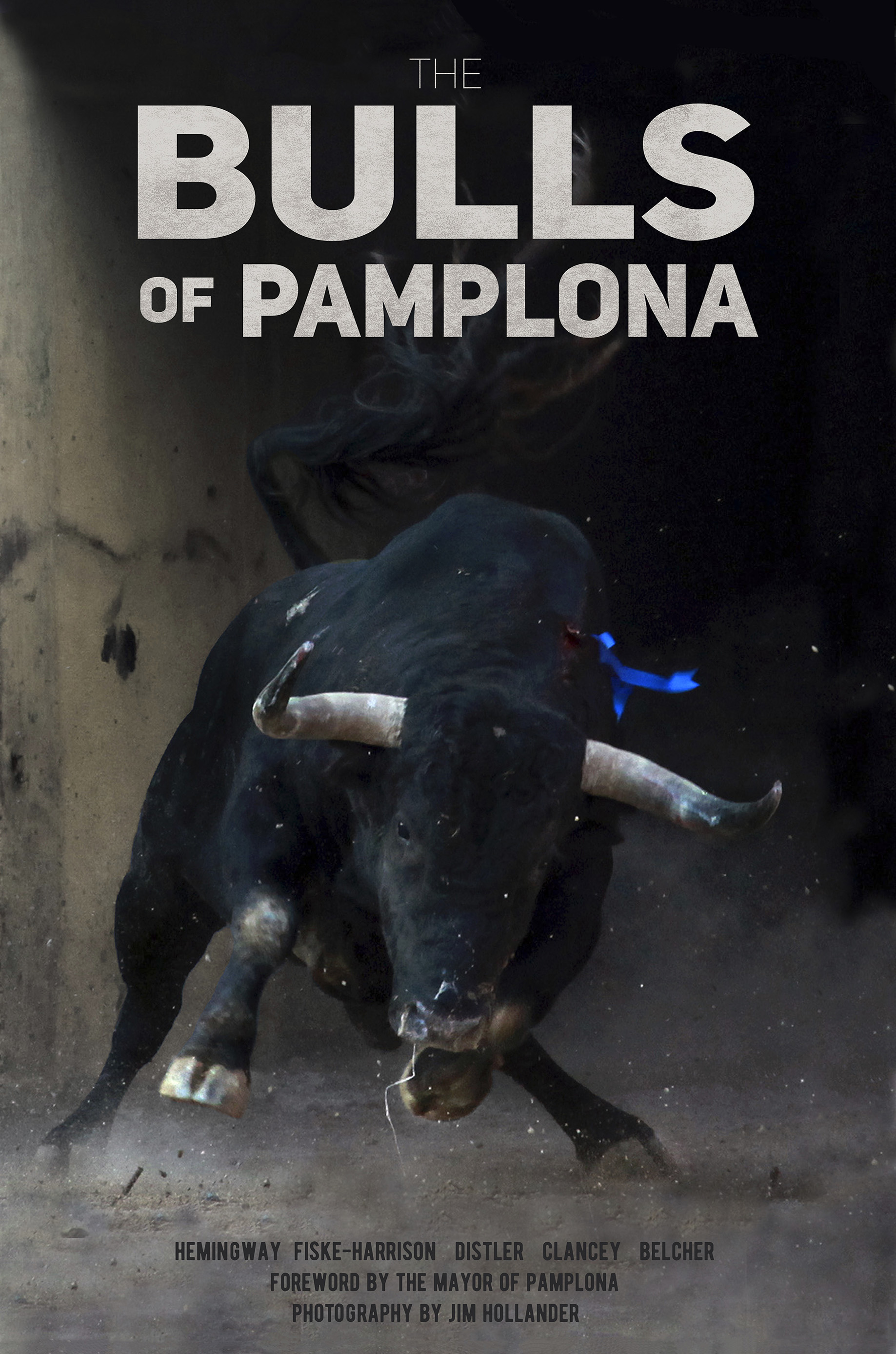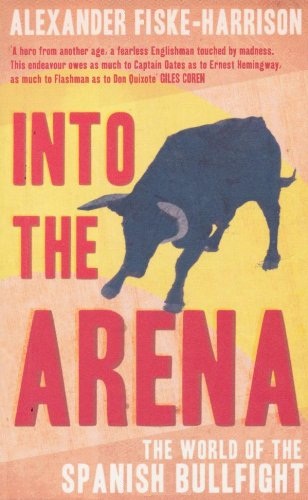… is both a true and a false headline. (It is also the headline of the latest review of my book, Into The Arena, enclosed below.)
It is true of the great ‘Papa’ himself, for Ernest Hemingway never ran in Pamplona despite making it so famous (and writing an article for The Toronto Star on how he had been gored there.) However, last weekend, on the day the review below came out, and 50 years and 7 days after Papa’s suicide, I was busy treading where he did not alongside John Hemingway, Ernest’s grandson and no mean author himself (see Strange Tribe: A Family Memoir). The fact that he chose that day for his run this year – his second ever – is even more impressive. First, because it was on the anniversay of his first run in ’09, when 27-year-old Daniel Jimeno Romero, an experienced second generation bull-runner was killed. Second, because it was with los toros de la muerte, ‘the Bulls of Death’, bred by the sons of Don Eduardo Miura (my first run was with them in ’09 as well.)
That was just one of my highlights. Another was meeting up with one of the sons of Don Eduardo, Antonio, and his wife Cristina, who told her my girlfriend the most flattering lies about my bullfighting skills. ¡Gracias Cristina! Pero ningún inglés es tan bueno a torear…
That said, I did have some good runs, as shown by the photo below with a Torrestrela bull from the finca Los Alburejos of my friend Don Alvaro Domecq. I am in the red and white striped blazer. These happen to be the colours of Pamplona during San Fermín. They also happen to be colours of the my school, Eton’s, Athletics Club, awarded to me in ’94 for the 400m.
(This photo appeared in the Diario de Navarra, Daily Telegraph [UK,] Die Welt [Germany] and around the US. Copyright REUTERS/Joseba Etxaburu)
It is severly frowned upon to touch the bulls, but I have just seen his brother coming up behind me, so I needed to stabilise myself at a flat sprint while looking over my shoulder, until I could judge the moment right to slip between the two bulls, as shown in the photo here. This meant I could “run on the horns” of a bull, while neatly reducing the risk of being knocked into by other runners with a half-ton “people-plough” clearing the path in front of me. A tricky balancing act, indeed.
10 July 2011
Where Hemingway feared to tread
Into The Arena by Alexander Fiske-Harrison
James Owen
* * * * *
Whatever you think of Alexander Fiske-Harrison’s account of his quest to become a bullfighter, you have to admire his guts. Not literally, happily, but there are times in his year as an amateur matador in Spain in which he seems likely to learn first-hand how cruel the arena can be.
Which perhaps is as it should be. For all his writing about it, Ernest Hemingway never went into the bullring. For Fiske-Harrison, the only way to justify bullfighting is by fully understanding the risks involved.
It is a far fairer contest than fox-hunting. The bulls weigh more than a ton, turn nimbly as ice-skaters and can lift a horse and rider up on the point of a horn. When the greatest current fighter, Jose Tomas, was gored at a bullfight in Mexico, he lost a total of 17 pints of blood.
No wonder studies show that psychopaths and bullfighters have the same unnatural calm body chemistry. In Spain, bullfighters are bigger celebrities than footballers.
But do the artistry and spectacle justify the suffering? Fiske-Harrison’s argument that the interplay between man and bull, when done with the highest skill, merits the tragedy will not convince many readers.
But his descriptions of the fights are compelling and lyrical, and his explanation of different uses of the matador’s capes is illuminating. One begins to understand what has captivated Spaniards for centuries.
This complex and ambitious book examines not only life in the bullring but also Spain’s cultural identity and modern ideas of masculinity.
Fiske-Harrison admits that with each of his fights he knows more, not less fear. When he kills his first and only bull he feels not triumph but overwhelming sadness for a life taken.
His point that the matador’s disregard for his own life in the ring makes him respect it more keenly outside appears incontestable. One only wishes that our own discredited sports stars were as wise.









Pingback: The Bullfight and the ban (and the Spanish Economy) « The Last Arena